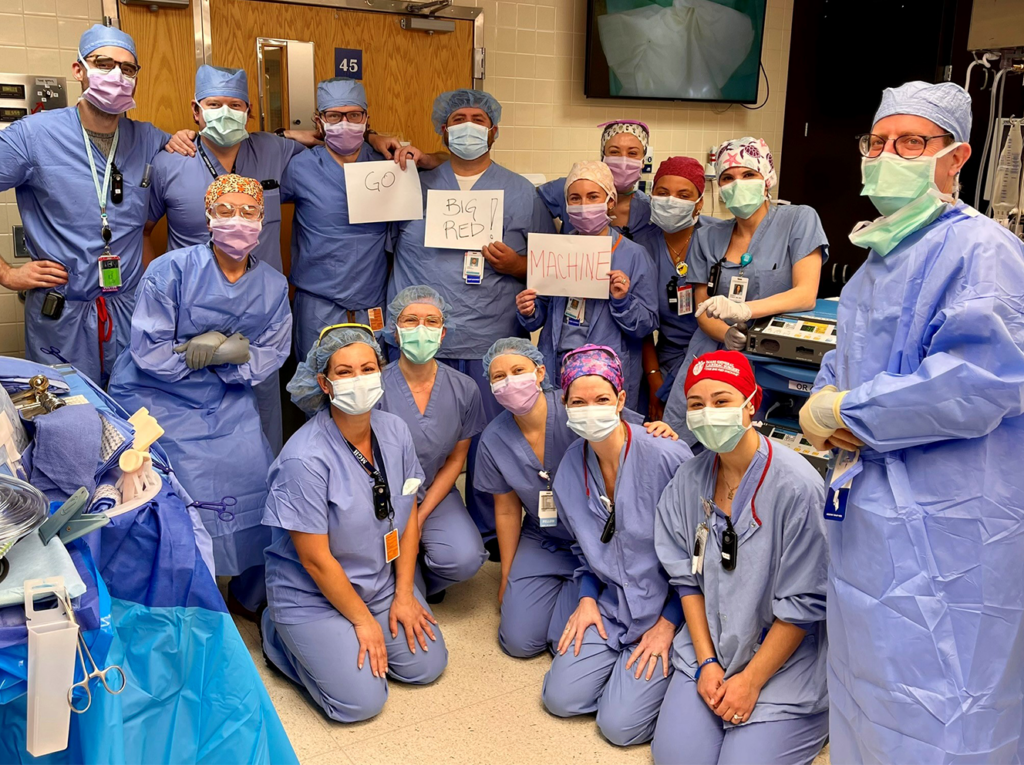Heart disease is the leading cause of death for men and women, and about half of Americans have at least one risk factor for it. This information is a bummer, but it doesn’t have to be. February is American Heart Month, and that’s a good time to consider the difference our diets can make.
Research indicates eating foods with fiber lowers the risk of heart disease.
It is easy to get discouraged by headlines like “Butter is Back.” Just ask the poor souls who have been throwing away egg yolks since the Carter administration. (There is no longer a need to participate in this sad kitchen sport – eggs are not the problem for most of us.) We now have more insight on how diets correlate with disease risk.
Food that Protects
Research indicates eating foods with fiber lowers the risk of heart disease. Fiber is not sexy, but your risk goes down for every 7 grams you can increase. That’s roughly the amount in a half cup of beans. Legumes also contain plant compounds called phytosterols, which have been shown to reduce cholesterol. It is recommended to consume 2 to 3 cups of beans per week, but most Americans average less than a cup.

Fruits and vegetables should be mentioned here, as well. Simply striving to increase your intake would be a very worthy cause, since three out of four of us do not get enough.
If you are already consuming the recommended five cups per day, ‘tis the season to think red and pink. These colors often indicate the presence of lycopene, which has been shown to reduce inflammation associated with heart disease. The lipstick-hued plant pigment may also display some anti-platelet effects similar to aspirin.
You can find lycopene in produce like tomatoes, guava, watermelon and grapefruit. (On a statin? Watch your grapefruit intake.) It is better absorbed when cooked, so making tomato sauce would not be the worst way to show love to your valentine. Adding a little olive oil helps absorption too, though it also brings up the contentious issue of fat.
In general, unsaturated fats (think: olive oil, fish, avocado, nuts and seeds) are protective. When people eat more unsaturated fats, they have a lower risk of both heart disease and early death compared to higher intakes of saturated fats – which come mainly from four-legged animals.
For those who can’t eat fish, aim for plant-based omega-3s, like walnuts, flaxseed and soy.
Fish and Heart Health
Fish seems particularly helpful, so long as it is not regularly sent to the deep-fryer. Aim to eat two servings or about 6 to 8 total ounces per week. If you buy a pound of fish and split it with a dinner companion, you will meet your weekly quota. The oilier the better – salmon, sardines, herring, mackerel, tuna and anchovies are excellent sources.
Suggesting fish often brings up a mutiny of questions about contaminants like mercury and polychlorinated biphenyls (PCBs). For most, these should not be a concern. Research shows benefits outweigh risks, particularly if you are simply aiming to meet recommended guidelines. PCBs, which have been linked to cancer, are present in animal products such as dairy, chicken and beef in amounts comparable to fish.
For those who can’t eat fish, aim for plant-based omega-3s, like walnuts, flaxseed and soy. The evidence for their consumption isn’t as strong, but people who eat more of these fats have lower risk of death from sudden cardiac arrest, which accounts for half of all cardiovascular deaths.

Less Restriction, More Enjoyment
Some claim consuming oil of any type is hazardous. This often includes concerns about the use of chemical solvents, like hexane, and deodorizers to create bland-tasting oils. This practice does reduce omega-3 content, but not to negligent levels. As for hexane, you consume more from the fumes inhaled at a gas station than a salad. Cold-pressed fats, like extra virgin olive oil, are ideal.
Lastly, we are still learning about the role of dairy products. Recent research indicates fermented full-fat dairy products, like whole-milk yogurt and cheese, may have little effect on your cardiovascular health. That’s good news for cheese lovers. Butter may not be as harmful as once thought either, but studies still don’t show greater benefits compared to fish and plant-based sources.
While it can be frustrating to see nutrition science change, new research often allows for less restriction, which means more enjoyment of food. This is a good thing. But it does not change what we have been saying for decades: Eat more plants. Your heart will thank you.

Emily Gelsomin, MLA, RD, LDN, is a senior clinical nutrition specialist at Massachusetts General Hospital. As a registered dietitian, she counsels on medical nutrition therapy on an outpatient basis and is co-director of Be Fit, the hospital’s employee wellness program.
Jointly sponsored by The Clubs at Charles River Park and MGH Nutrition and Food Services, the 10-week program focuses on helping participants “Be Fit and Eat Right.” Every ten weeks, employees from different departments within the hospital compete with each other as they make a commitment to Be Fit. Through the creation of a social environment at the workplace, participants are supported to make progress in personal lifestyle changes with the help of a unique support system that includes a dedicated nutritionist and personal trainer.
Be Fit strives to create a milieu of wellness that extends beyond the 10-week curriculum by offering features to those who are not part of the intensive program. This includes the creation of Choose Well, Eat Well, a rating system designed to help both employees and patients increase awareness of healthy choices at retail eateries within the hospital. It also includes a monthly e-mail with a timely nutrition tip.






